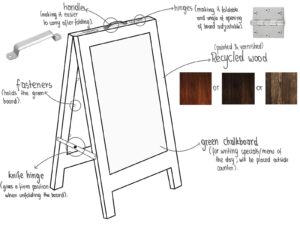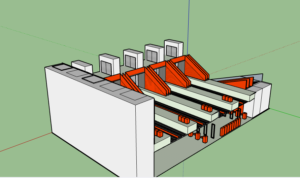Problem solving – creatively
With the future of jobs becoming increasingly AI dependent, creative careers such as design have increasingly become popular among students.
Design & technology gives students the opportunity to delve into a range of topics including, aesthetics, electronics, engineering, ergonomics, manufacturing, graphic design, materials technology and more, irrespective of their field of study.
Anyone involved in designing uses “design thinking”: a non-linear, iterative process that challenges them to find opportunities and solutions to problems or needs that people face. From your spoon to a city, a designer has solutions to make it better, user-friendly and worth its value. The process of starting with a need or a problem and delivering a product and finally reflecting on the process has a lot of value and learning for the student. It is this kind of learning that universities and work places look for: Unique, experience-based and one that adds value. To accomplish this, a design & technology class at the high school level must provide ample opportunities for students to make mistakes and grow.

While there is no one type of design class experience, a student can expect a lot of active hands-on learning. Students will also sketch ideas, a lot of those in the design stage. Sketching forms an important part of design communication and the basics of sketching can be picked up by anybody who is willing to practise. Sketching here does not imply an artistic method of drawing (however, art can add a positive spin to the sketch). Sketching here is akin to engineering drawing. Representing ideas in 3D, on paper, using different views, rendered with colour with the aim of communicating the idea to the user.


The design course at high school level just about scratches the surface of a design career. At the university level, the diverse range of design degrees is astounding and offers specific areas of interest that a student could choose from: Product design/ industrial design, graphic design, engineering design, interaction design, architecture, interior design, urban design, landscape design, fashion design & technology and the list goes on.
A lot of these degrees will find students attending classes in studios exploring communication methods, arts and technology. The courses in universities typically explore design movements and inspirations from around the world and have students work on their own projects while learning to work with clients and other designers, mimicking real-life work places. But what is so special about doing this type of work in high-school?

A course like Design & technology falls under both science & technology and art. It has elements of engineering, business and marketing. The course is largely driven by the student according to their tastes when it comes to the project. The biggest advantage of such a course is the amount of learning that happens. In addition, the student creates a portfolio that captures the process of designing.

Dr. Shankar Ramakrishnan, Cambridge Educator – Design & Technology, CS Academy.


